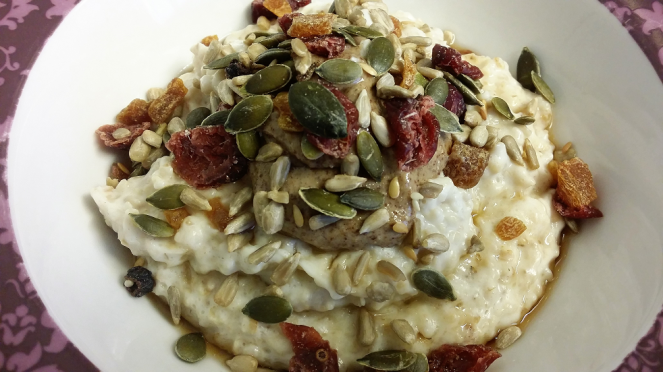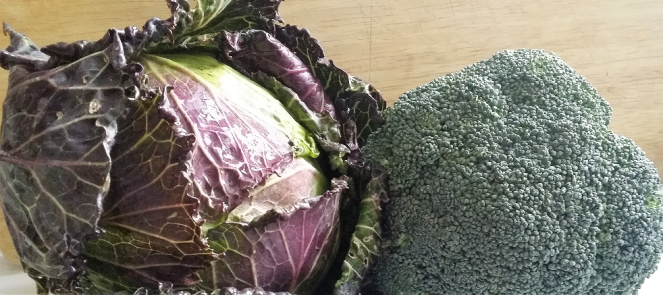[Veganism is…] “…a philosophy and way of living which seeks to exclude—as far as is possible and practicable—all forms of exploitation of, and cruelty to, animals for food, clothing or any other purpose; and by extension, promotes the development and use of animal-free alternatives for the benefit of humans, animals and the environment. In dietary terms it denotes the practice of dispensing with all products derived wholly or partly from animals.”
The Vegan Society 1979
The first known vegan was an Arab poet, Al-Maʿarri (c. 973–1057). His argument was that if humans deserved justice, so did animals. William Lambe, a London physician, declared in 1815, that animal food was an “habitual irritation”, and claimed that milk and [animal] flesh were part of the same problem in regard to health. The term ‘vegan’ was first coined in 1944 by Donald Watson, a dairy-free vegetarian. He then went on to form The Vegan Society and in 1979, the society became a registered charity.I have been very lucky so far in that none of my family or friends have derided me for turning to veganism. I’ve had the usual jokes and the ‘but…. Bacon?!’ and I have taken it in the vein that it was intended but I have had heard of many vegans who have had a terrible reception by friends and worse, family. There seems to be a great deal of opposition from a number of omnivores towards vegans, who think that giving up any kind of animal product is not only akin to manslaughter but that we will all die of malnutrition and starvation in the process. Believe me, I have been greatly disappointed by the myth that instant weight loss will ensue.
Unfortunately, myths abound around veganism as though it were some mysterious occult religion. I’m going to discuss here the four that I have heard of most;
- Protein – where do we get it
- Calcium – you can only get it from cows milk
- Soya – won’t men grow boobs?
- Honey – isn’t it just a by-product?

Protein
I think the biggest myth is that the only way to get enough protein is through meat. Tell that to a 1500lb rhinoceros! We only need a small amount; 0.8g per kilo of body weight, so for example, an adult weighing 10st 6lb (approximately 66k) only needs roughly 83g (3.1oz) per day.
The body requires twenty amino-acids to function. Of those twenty, the body can only produce eleven. This means that we need to find nine from outside sources. Plant-based protein sources don’t generally contain enough of all nine essential amino-acids, where-as animal derived protein does, hence (possibly) the misconception that vegans are seriously lacking. The real truth is though, that due to our very varied diets, we have access to more than enough.
Sources of vegan protein:
- Beans, peas and pulses
- Nuts
- Seeds
- Processed soya products such as tofu
- Whole grains
- Dark green leafy vegetables (DGLV)
- Fruits

By combining the different protein sources, it is easy to produce a nutritious, tasty meal. Take for example, a bowl of porridge in the morning made with soya milk, a spoonful of peanut butter and a sprinkle of seeds (pumpkin seeds are particularly high in protein). This will give you a great breakfast with adequate amounts of protein to get your day off to a good start, or try pairing chickpeas with some quinoa and broccoli for dinner and you have all nine amino acids covered.

Chickpea Tagine served with quinoa and dark green cabbage
Chilli con Chris served with brown rice
Calcium
More years ago than I care to remember, I realised that my eldest daughter might have an allergy, or an intolerance, to milk. I met with resistance by my doctor and health visitor and had to do my own research to help me make the changes to my daughter’s diet. That was when I discovered that much of the world population was intolerant to cow’s milk and that actually, a lot of nationalities didn’t drink cow’s milk at all and had lower rates of osteoporosis. Humans don’t naturally produce the enzyme required to digest it. And why would we? After all, cow’s milk is designed to feed cow babies, not human babies (link).
I eventually ended up buying powdered soya milk that was fortified with calcium. It was then that I also discovered that calcium could be found in a number of other plant-based foods;
- porridge oats
- chickpeas/kidney beans/black-eyed beans
- sesame seeds/tahini/other seeds
- almonds
- leafy green vegetables (but not spinach. The calcium is bound to an oxalate that prevents absorption).
- oranges
- even water from a hard water area can contain a reasonable amount of calcium
- Foods such as bread and plant milks that are fortified with calcium

Soya
“You’ll get cancer”, “men will develop breasts”.
Unfortunately, many vegetarians and vegans also believe these myths. Soya contains phytoestrogens that can mimic oestrogen (a female hormone) but studies showed that 9,000 breast cancer survivors that ate soya actually lowered their risk of breast cancer recurrence. Whilst high doses of phytoestrogens can impair male rats ability to produce offspring, humans are not rats and studies on humans show that men do not become ‘feminised’ (link).
Honey
Honey is not a by-product, it is the life-force of the hive, and without it, the hive would die. In commercial honey harvesting, the hive is stripped of all honey and a sugar syrup substitute put in place. During the winter when pollen harvesting is scarce, the bees rely heavily on the honey. The sugar replacement has no nutritional value, causing the bees to decline in health and gradually die off.

Bee colonies grow and eventually swarm. For a commercial bee keeper, this can often mean the loss of some income so the queen bee’s wings will often be clipped to prevent the bees from leaving. Bees are intelligent creatures, but how do we know if they can feel pain or not? My answer to that is, “does it really matter?!” By removing the queen’s wings, commercial keepers are taking away her ability to do what comes naturally to her and who are we to interfere with the natural of order of things?
